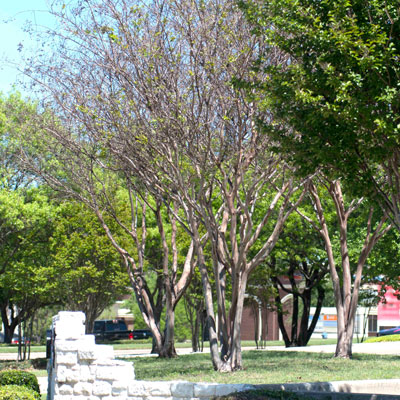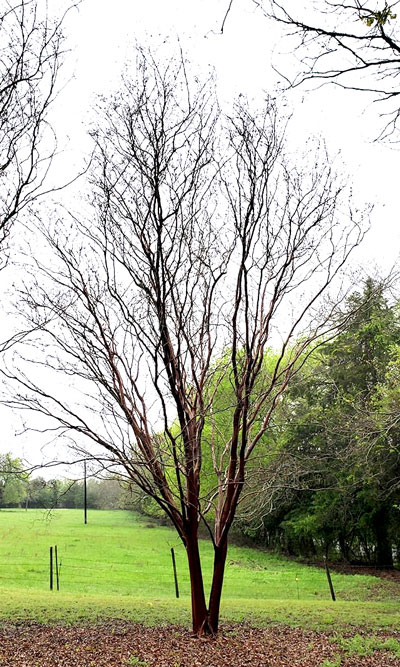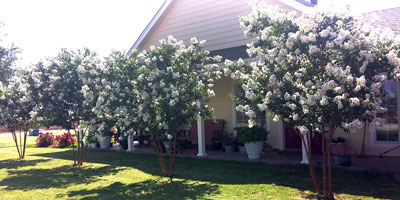Question of the Week – Number One: April 9, 2020

“Why does my crape myrtle look so bad? What can I do to help it?”
This question arrived like a meteor about a week ago. Suddenly everywhere I turned folks were asking what was wrong with their trees. I’ll answer in short form, but I’ll give you all of the facts. I’m trying to get this word out as quickly as I can to all my readers and listeners.
• This is freeze damage brought on by the first freeze last fall. It happened unusually early, in late October, and temperatures dropped into the 20s before the plants had begun to go dormant.
• It happened primarily in the I-20 corridor and northward.

• Varieties Natchez (tall white), Tuscarora (tall rosy-red), Muskogee (very tall lavender), Sioux (medium bright pink) and Country Red (uncommon red) were predominantly hit. They are notoriously susceptible to winter kill.
• The plants themselves are not dead – just parts or all of their tops.
• Plants that are leafing out sparsely will probably suffer dieback.
• Indication of loss of trunks is if you see vigorous new shoots coming up from the plants’ bases.
• To restore plants that are sparse or leafless, lay your chainsaw or pruning saw flat on the ground and cut the trunks off flush with the soil. (You need to trust me that this will work!)
• New shoots will start emerging from the roots within just a few weeks – dozens of them.
• Allow all of them to remain for several months. By late June remove all but 25 or 30 per plant. You want to leave many extras because they are quite brittle and can easily be broken off at the ground.
• By late fall select 10-12 straight shoots and remove the rest. Do something to protect the remaining ones against being broken over the winter.
• Come June 2021 remove all but the final 3 or 5 stems that you want to be your final trunk and put 1×1-inch stakes parallel to and alongside each of them.

• By summer 2022 you will have beautiful, blooming crape myrtles that may approach the height of the old stems. You’ll be amazed! Please take “Before” and “After” photos to show your plants after a couple of years and share them with me!
Important note: This is also a great way to restore the natural form and beauty of a crape myrtle that has been butchered by being topped.
